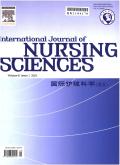障碍和促进实施可持续性的证据为基础的实践对肠周刺激性接触性皮炎:一个描述性定性研究
IF 3.1
3区 医学
Q1 NURSING
引用次数: 0
摘要
目的基于实施研究统一框架(CFIR),探讨影响肠周刺激性接触性皮炎(PICD)循证实践(EBP)可持续实施的障碍和促进因素。方法选取北京某三级医院3个泌尿科病房17名参加EBP的护士为样本。在CFIR的指导下,我们通过对17个个人深度访谈进行定向内容分析,确定了影响实施可持续性的结构。通过评分,确定每个构念的效价和大小。结果本研究确定了CFIR的5个领域中的19个因素。在这些决定因素中,16个被确定为障碍,3个被确定为促进因素。确定了不同背景下的常见障碍,如延迟证据更新,干预成分和步骤的复杂性,以及实施过程与临床实践之间的不兼容性。相反,促进干预措施实施的因素是定期沟通和反馈、校长的支持和推动,以及积极的文化氛围。此外,我们将“定期证据更新”确定为CFIR之外的独立结构,这一发现将为更新CFIR框架提供关键信息。结论定期的证据更新对EBP实施的可持续性至关重要。研究者应该从从业者那里得到一致的反馈,并根据需要调整或修改EBP。此外,研究人员在制定EBP时必须考虑其内容与临床实践的兼容性或适应性,而不是给原始工作流程增加额外的复杂性。本文章由计算机程序翻译,如有差异,请以英文原文为准。
Barriers and facilitators of implementation sustainability of evidence-based practice for peristomal irritant contact dermatitis: A descriptive qualitative study
Objectives
To investigate the barriers and facilitators influencing the sustainable implementation of evidence-based practice (EBP) for Peristomal Irritant Contact Dermatitis (PICD) based on the Consolidated Framework for Implementation Research (CFIR).
Methods
The sample consisted of 17 nurses from three urology wards at a tertiary hospital in Beijing, China, who had participated in the EBP. Guided by the CFIR, we identified constructs influencing the sustainability of implementation by conducting a directed content analysis of the 17 individual in-depth interviews. By rating, the valence and magnitude of each construct were determined.
Results
This study identified 19 factors across the five domains of the CFIR. Among these determinants, 16 were identified as barriers, while three were recognized as facilitators. Common barriers across different contexts were identified, such as delayed evidence updating, the complexity of intervention components and steps, and incompatibility between the implementation process and clinical practices. In contrast, facilitators of intervention implementation were regular communication and feedback, support and drive from principals and a positive cultural atmosphere. In addition, we identified “regular evidence updating” as an independent construct outside of the CFIR, a finding that will provide key information for updating the CFIR framework.
Conclusions
Regular evidence updating is crucial for the sustainability of EBP implementation. Researchers should receive consistent feedback from practitioners and adjust or modify the EBP as necessary. Additionally, researchers must consider the compatibility or adaptability of the EBP’s content with clinical practice in formulating it rather than adding additional complexity to the original workflow.
求助全文
通过发布文献求助,成功后即可免费获取论文全文。
去求助
来源期刊

International Journal of Nursing Sciences
Nursing-Nursing (all)
CiteScore
6.10
自引率
2.60%
发文量
408
审稿时长
25 days
期刊介绍:
This journal aims to promote excellence in nursing and health care through the dissemination of the latest, evidence-based, peer-reviewed clinical information and original research, providing an international platform for exchanging knowledge, research findings and nursing practice experience. This journal covers a wide range of nursing topics such as advanced nursing practice, bio-psychosocial issues related to health, cultural perspectives, lifestyle change as a component of health promotion, chronic disease, including end-of-life care, family care giving. IJNSS publishes four issues per year in Jan/Apr/Jul/Oct. IJNSS intended readership includes practicing nurses in all spheres and at all levels who are committed to advancing practice and professional development on the basis of new knowledge and evidence; managers and senior members of the nursing; nurse educators and nursing students etc. IJNSS seeks to enrich insight into clinical need and the implications for nursing intervention and models of service delivery. Contributions are welcomed from other health professions on issues that have a direct impact on nursing practice.
 求助内容:
求助内容: 应助结果提醒方式:
应助结果提醒方式:


